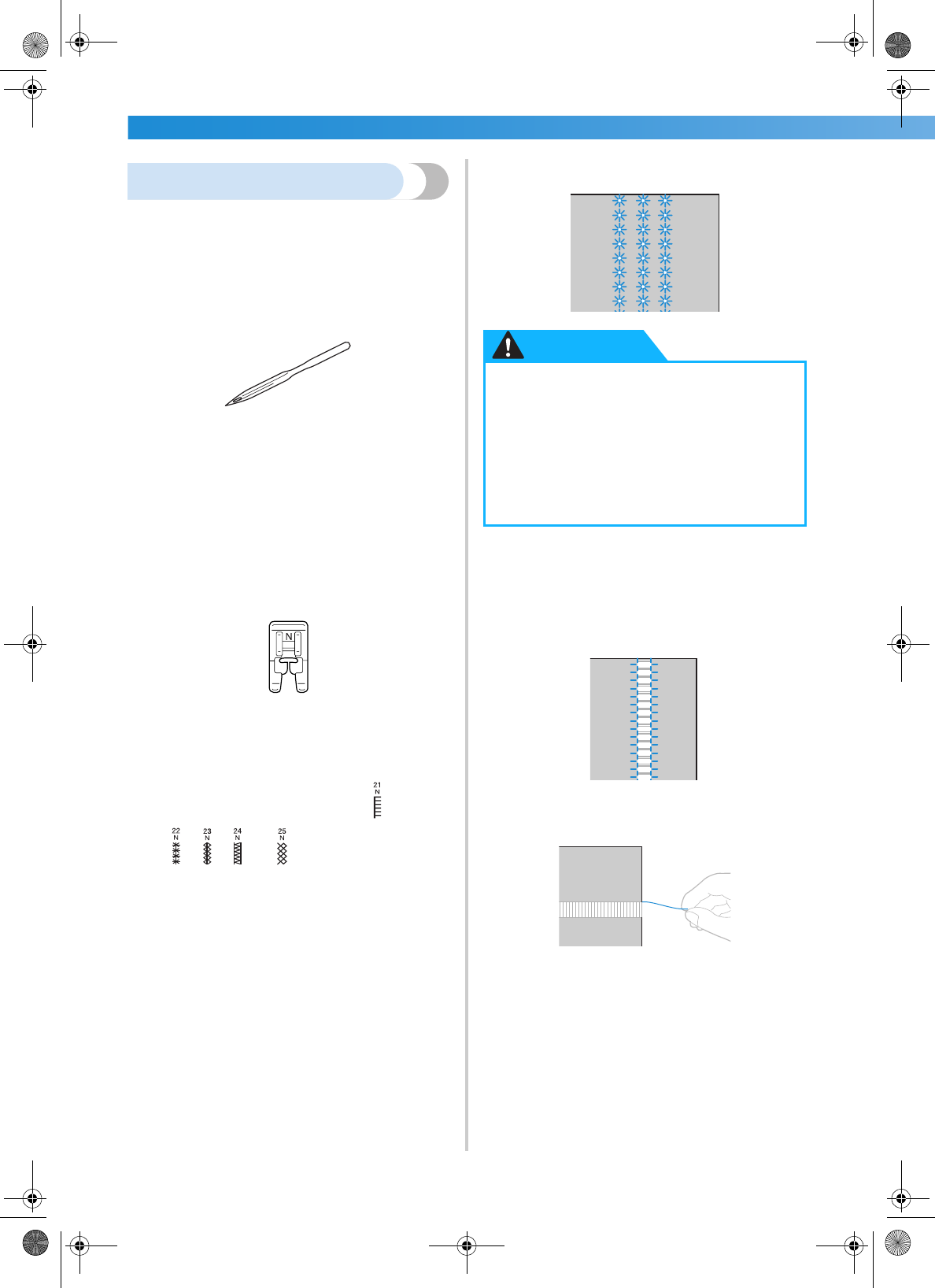
UTILITY STITCHES ——————————————————————————————————————————————————————
—
92
Heirloom stitching
When sewing with the wing needle, the needle holes
are enlarged, creating a lace-like decorative stitch.
This is used to decorate hems and tablecloths on thin
or mediumweight fabrics in addition to plain weave
fabrics.
1
Install the wing needle.
• Use a 130/705H 100/16 wing needle.
• For details on installing a needle, refer to
“Replacing the needle” (page 32).
• The needle threader cannot be used with the
wing needle, otherwise the sewing machine
may be damaged. Manually pass the thread
through the eye of the needle from the front
to the back. For details, refer to “Threading
the needle manually“ (page 25)
2
Attach monogramming foot “N”.
• For details, refer to “ Replacing the presser
foot” (page 35).
3
Select a stitch.
The stitches that can be used are
,
,
, or .
• For details, refer to “ Selecting stitching”
(page 58).
• Select a stitch width of 6.0 mm (15/64 inch)
or less.
4
Start sewing.
Partially removing threads is called “drawnwork” .
This gives a beautiful result with fabrics that have a
loose weave.
Two ways to create drawnwork are described below.
■ Drawnwork (Example 1)
The fabric is turned and sewn twice
1
Pull out several threads from the fabric.
● Select a stitch width of 6.0 mm (15/64
inch) or less, otherwise the needle may
bend or break.
● After adjusting the stitch width, slowly
turn the balance wheel toward you and
check that the needle does not touch the
presser foot. If the needle hits the presser
foot, the needle may bend or break.
CAUTION
S2_brotherE.book Page 92 Thursday, February 13, 2003 11:03 AM


















